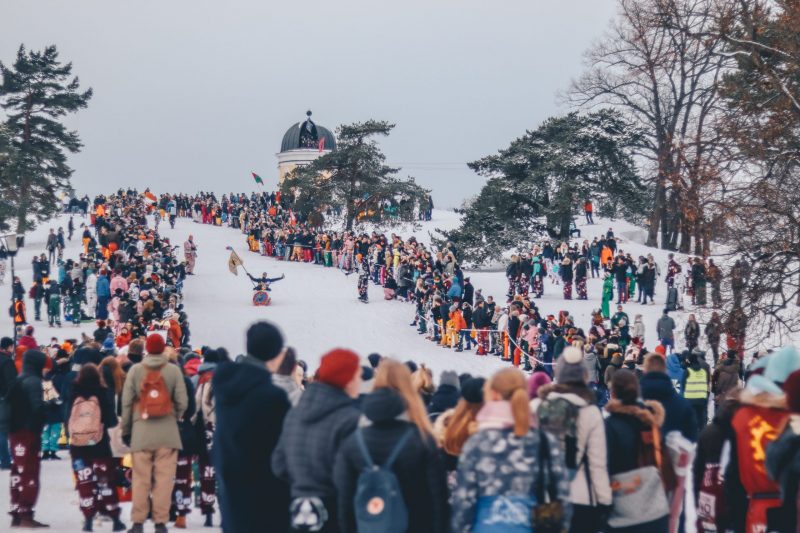Hanukkah
In winter, followers of the Jewish faith light a special candle holder called a menorah. The menorah is lit in memory of an ancient miracle, where one day’s worth of oil burned brightly for eight days in the temple. This holy time is celebrated with festivities including eating special potato pancakes called latkes and spinning a top called a dreidel to win sweet treats.
Winter Solstice
The Winter Solstice falls around December 21st and is the shortest day of the year – when we receive the least amount of daylight. At this dark time of the year, people participate in festivals to bring some joy and laughter into their communities. People once celebrated by lighting bonfires and candles to coax back the sun – not so different from traditions we still enjoy to this day!
St. Lucia Day
St Lucia was a third century saint whose death is celebrated on December 13th. In Sweden, young women dress up as “Lucia brides” in white gowns with red sashes, and a wreath of burning candles on their heads. The day is celebrated with singing and coffee with saffron buns called “Lucia cats”.
Christmas
Christmas Day is celebrated in many different ways all over the world. Presents are often given, fir trees are brought inside and people go carol singing. As with all traditions, it has evolved over time, but many still celebrate the lead up with Advent and keep this as a holy time of year.
Every country has a different tradition and places focus on a different day of the festive season. For example, December 26th is very important in Ireland and is called St. Stephen’s Day: children go from door to door singing, holding a stick that is topped by a holly bush and a wren; they ask for money for the “starving wren”. In the Ukraine, December 24th is known as as Sviata Vechera, which means “Holy Supper.” The celebration begins when the first evening star is sighted in the night sky.
New Year
New Year is celebrated in many different ways all over the world. It is often seen as a time for renewal – an opportunity to reflect on the year past and set goals for the year ahead. In Ecuador, families clothe a straw man in old clothes on December 31st and tie lists of all their faults to him. At midnight, they burn this man, hoping that their faults too will burn with him.
In Japan, Omisoka (New Year’s Eve) and New Year’s Day are the most important celebrations in the year. In many homes, there is a cast bell that is struck 108 times, symbolising desires believed to cause human suffering; again, the emphasis is on ‘renewal’. Similarly, people in Hong Kong pray to the gods and ghosts of their ancestors, asking that they will fulfil wishes for the next year.
Mardi Gras
Lent is a solemn time of reflection with celebrations beginning on the Tuesday before the start of Lent. In New Orleans, people wear costumes and attend huge parades for the festival of Mardi Gras. Brazil’s Carnival also has parades, costumes, and music. Elsewhere, this day is known as Shrove Tuesday or Pancake Day.

